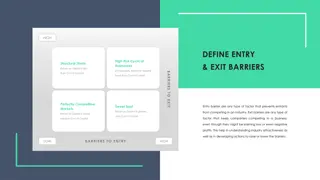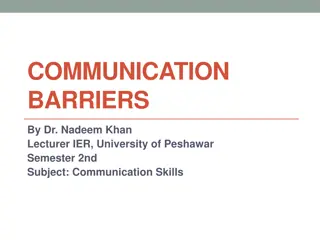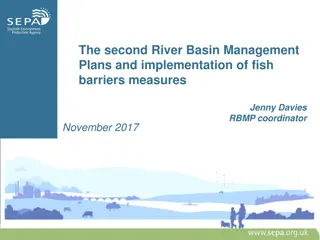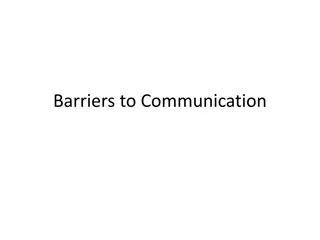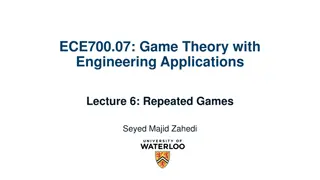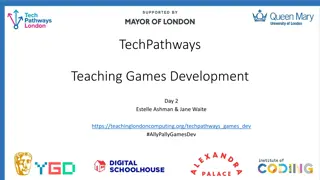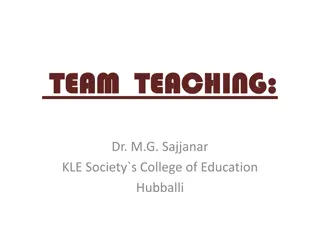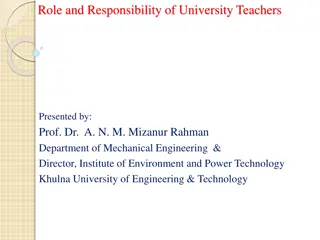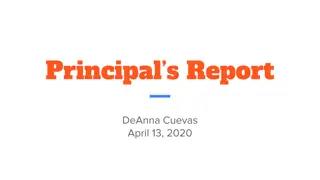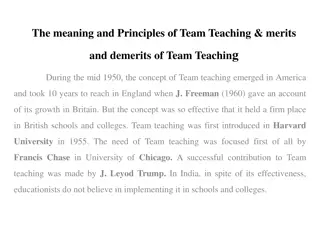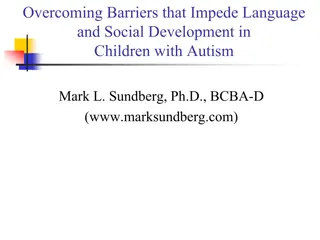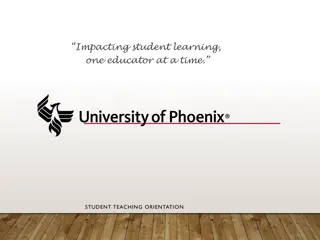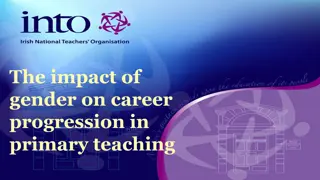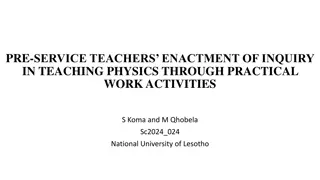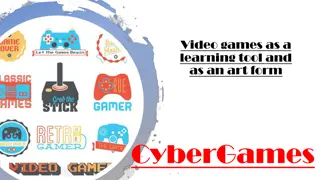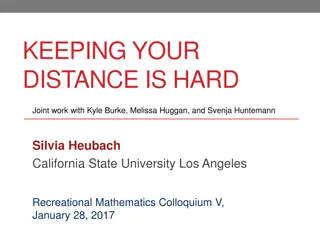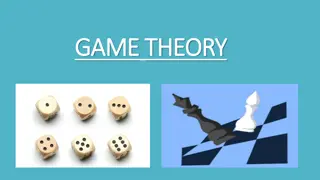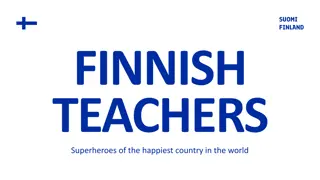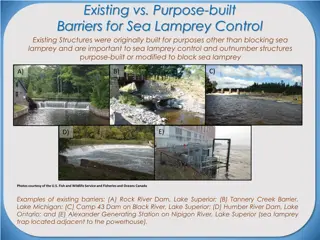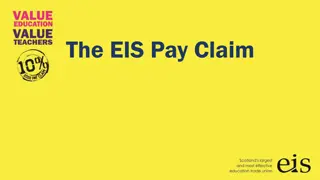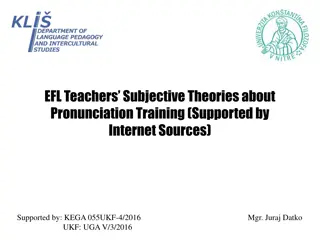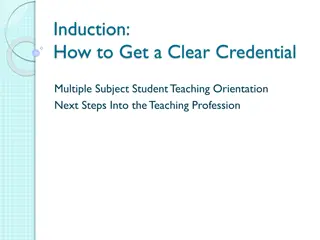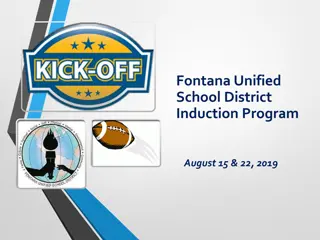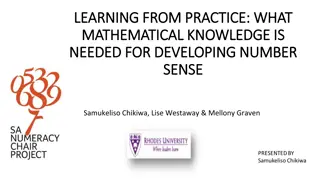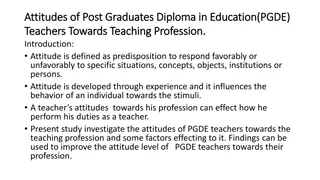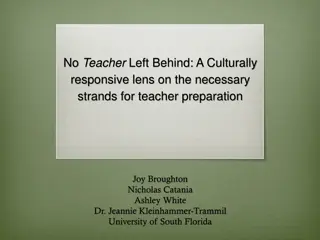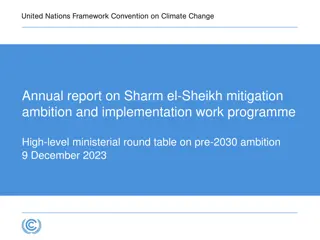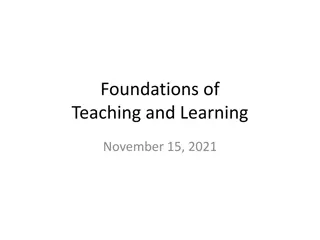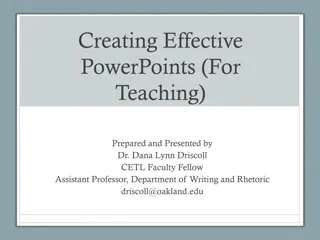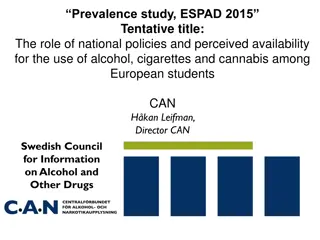PE Teachers' Engagement with Teaching Games for Understanding and Perceived Barriers to Implementation
Phase 2 of this project aims to provide evidence for PE teachers using a games-based approach. The Teaching Games for Understanding model by Bunker and Thorpe is explored, along with identified barriers to implementing TGfU. The goal is to reduce barriers and enhance PE teachers' ability to deliver education effectively.
- PE teachers
- Teaching Games for Understanding
- barriers to implementation
- physical education
- games-based approach
Download Presentation

Please find below an Image/Link to download the presentation.
The content on the website is provided AS IS for your information and personal use only. It may not be sold, licensed, or shared on other websites without obtaining consent from the author. Download presentation by click this link. If you encounter any issues during the download, it is possible that the publisher has removed the file from their server.
E N D
Presentation Transcript
PE Teachers' Engagement with Teaching Games for Understanding and Perceived Barriers to Implementation Dr Steven Anderson and Ellen-Alyssa Gambles
Background This presentation is Phase 2 of 3 Aim of the project is to provide evidence that can inform the future approaches of PE teachers when using a games-based approach . Rationale Growing concerns in the 1970s/80s that children were leaving school incompetent in understanding game play (see Almond, 1986; Bunker and Thorpe, 1982). Those opposing traditional methods of delivery cite techniques being taught in isolation to the game as obstructing a child s understanding and performance (Bunker and Thorpe, 1982; Griffin and Butler, 2005).
Teaching Games for Understanding The model was first introduced by Bunker and Thorpe (1982) It was designed as a step- by-step procedural model for teachers The aim was to enable students to become competent and skilful game players
Teaching Games for Understanding 1. Modified game 2. Rules of the game 3. Tactics of the game 4. What to do & how to do it 5. Executing movements within the game 6. Achieving the criteria of the game
Phase 1 Perspectives and Identification of Barriers Grounded in Occupational Socialisation Theory Acculturation (Childhood) Parental Influences Teacher s Experience as a Pupil Professional Socialisation (University/Teacher Training) Education Placements Organisational Socialisation (On-the-Job) Department ethos Teacher education
Perspectives and Identification of Barriers Phase 1 identified five main barriers to implementing TGfU Lack of knowledge Lack of time Lack of understanding Lack of support Reluctance to change
Introduction Phase 2 aimed to reduce the main barriers to PE teachers to be able to deliver with a TGfU approach Rationale PE has been critiqued internationally as lacking in purpose, direction or educative intent (for example see Kirk, 2010) Game-based approaches (GBAs) emphasise inquiry oriented processes, such as well considered teacher use of questions to provided 'guided discovery' of game understanding (Light, 2013)
Aim and Objectives Aim: To evaluate the impact of a teacher training session. Objective 1: To train in-service teachers to deliver a TGfU approach in a 6-week training event. Objective 2: To evaluate the success of PE teachers delivering a TGfU approach as part of a scheme of work Objective 3: To identify teachers recommendations to overcome barriers associated with implementing a TGfU approach in physical education.
Methodology Pre-Post Design Study Questionnaire provided with the 5 main barriers (11 sub-barriers) 2 hour training conducted between January and March 2019 Teachers practiced using TGfU for a minimum of 1 hour per week for 6 weeks Questionnaire provided again Focus Groups conducted lasting approx. 45 minutes Paired samples t-test & thematic analysis 17 PE teachers from across 5 high schools in the North of England 8 males and 9 females, aged between 22 to 45 with 9 months to 22 years of experience
Standard Deviation 1.29 0.80 Sig (two- tailed) 0.017 Barrier Mean Pre Post 3.05 2.17 Lack of Time- for Planning Pre Post 2.52 1.82 1.17 0.72 0.029 Lack of Time- within lessons to teach TGfU Pre Post 3.41 2.29 1.37 0.91 0.003 Lack of understanding- needing to teach the skills first then focus on TGfU Pre Post 3.11 2.11 1.49 0.92 0.002 Lack of understanding- unsure how to apply TGfU in practice Pre Post 3.05 2.52 1.19 1.06 0.12 Lack of knowledge- of how pupils with different abilities cope with TGfU Pre Post 3.23 2.11 1.34 0.99 0.002 Lack of knowledge-lack of training in how to apply TGfU Pre Post 1.35 1.47 0.49 0.71 0.496 Teachers' reluctance to change how they teach Pre Post 2.00 2.00 1.00 0.86 1.00 Colleagues' reluctance to change how they teach Pre Post 2.76 2.05 1.48 1.14 0.118 Lack of support- from university lecturers Pre Post 2.88 2.05 1.40 1.34 0.074 Lack of support- from school mentors Pre Post 1.82 1.70 0.88 0.98 0.668 Lack of support- from colleagues
Findings Despite the reduction of some of the key barriers the focus groups and open-ended questionnaire opportunities allowed the teachers to discuss continued constraints upon their practice. Lack of knowledge Sport Content Knowledge Different Abilities Lack of time Planning Game Set-Up Lack of understanding Confidence and Preparedness Loss of Control Reluctance to change Willingness to try Increased pupil engagement
Recommendations Training Session Facilitating Expert Time Resources Senior Leadership Endorsement
Future Directions There is need for more longitudinal interventions which support teachers in the use of innovative approaches An understanding of the political agendas and institutional practices which constrain teachers is required to find solutions to integrate innovative approaches
Future Directions Phase 3 was originally planned to investigate one school from Phase 2 through the complete change of their Year 8 curriculum to follow a games- based approach. *Covid restricted the implementation* Phase 3 has become a comparison of the barriers to TGfU and Occupational Socialisation of in-service and pre-service PE teachers
References Almond, L. (1986) Asking teachers to research. In: R. Thorpe, D. Bunker and L. Almond (eds.) Rethinking games teaching. Loughborough: University of Technology, Loughborough, pp.35-44. Bunker, D. and Thorpe, R. (1982) A model for the teaching of games in secondary schools. Bulletin of Physical Education, 18(1), pp.5-8. Griffin, L. and Butler, J. (2005) Teaching Games for Understanding. Theory, Research and Practice. Illinois, Human Kinetics. Harvey, S. (2016) Dilemmas facing physical education teachers when teaching using game-centered approaches. Cultura, Ciencia y Deporte, 11(33), pp.181-184. Kirk, D. (2010) Defining physical education: nature, purposes and future/s. Physical Education Matters, 5(3), pp.30-31. Lawson, H.A. (1983a) Toward a model of teacher socialization in physical education: the subjective warrant, recruitment, and teacher education (part 1).Journal of Teaching in Physical Education, 2(3), pp.3-16. Lawson, H.A. (1983b) Toward a model of teacher socialization in physical education: entry into schools, teachers role orientations, and longevity in teaching (part 2). Journal of Teaching in Physical Education, 3(1), pp.3-15. Light, R. (2013) Games Sense: Pedagogy for performance, participation and enjoyment. Abingdon, UK, Routledge. Stolz, S. and Pill, S. (2014) Teaching games and sport for understanding: Exploring and reconsidering its relevance in physical education. European Physical Education Review, 20(1), pp.36 71.
Thank you! Dr Steven D. Anderson Ellen-Alyssa Gambles steven.anderson@sunderland.ac.uk ellen.gambles@sunderland.ac.uk With special thanks to Dr Sandra D. Leyland & Prof Jonathan Ling



